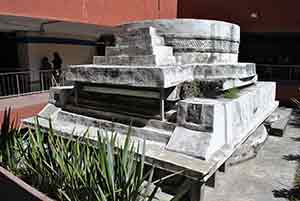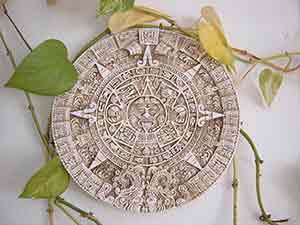More Info
Maintaining a Community's Culture & Heritage
 Aztec Culture and Heritage
Aztec Culture and Heritage
There is a fair amount of talk these days about minority communities being able to maintain their cultural traditions and not losing their heritage. This sometimes is even framed to include the white, European-descended majority community, as pundits talk about what motivates some of the divisions we see in the political realm.
Aztecs are certainly a minority in the USA, and even in modern-day Mexico, although prior to the Spanish conquest, this was not the case. So where does this minority status leave people like Ricardo Peña in terms of preserving their culture and beliefs?
First of all, we need to say a bit about what this heritage is, and is not. Most people are aware that during the Aztec reign, the priests and rulers practiced human sacrifice as part of their religious rituals. Before we get too involved in the horrors of this (and it was horrible), we should remember that the Spanish Inquisition (a "descendent" of earlier Christian Inquisitions) also resulted in thousands of executions in the name of religion; some people say a mere 3,000, while other assert the number was closer to 30,000. And these numbers don't take into account deaths of the accused who died in prison or because of torture, although never formally condemned. Including them would apparently bring the number of deaths to close to 100,000.
Furthermore, we should also remember the slaughter that the Conquistadores wreaked on the Aztecs and other indigenous groups; and the thousands and perhaps tens of thousands who died in the Protestant "witch trials" in Europe and the USA (especially theformer). I'm sure we're all aware that there are many other instances of horrific behavior that religions, governments, and individuals have inflicted on each other.
Returning to modern Aztec beliefs: obviously, modern-day Aztecs are not interested in practicing human sacrifice.
But they are interested in maintaining the many positive aspects of their heritage and religious beliefs. Ricardo Peña, who explains many of these practices and beliefs, is a prime example that it is possible for this to happen, even in a country where his ethnicity is a very small minority of the population and where the common language is not the language of the Aztecs (whose language, incidentally, is Nahuatl rather than Spanish). Peña is also concerned to see that the next generation - for example, he refers to his teenaged daughter - will carry on these traditions, values, and religion. In this sense, this documentary can serve as an example not only that the problem exists, but of one way to overcome it.
Where Are the Aztecs Today?
 No one seems to know the exact origins of the Aztecs although it is likely that they came down into central Mexico from somewhere "in the north." By the time of the great Aztec civilization (mid-1400s-1521) they were the majority population of central and northern Mexico, but were also found as far south as northern Guatemala and El Salvador.
No one seems to know the exact origins of the Aztecs although it is likely that they came down into central Mexico from somewhere "in the north." By the time of the great Aztec civilization (mid-1400s-1521) they were the majority population of central and northern Mexico, but were also found as far south as northern Guatemala and El Salvador.
In modern times, the number of pure Aztecs has greatly dimished. Many are farmers who live in the villages of southern central Mexico. Peña himself comes from central Mexico, from a town where there is a concentration of Aztecs. There are enough Aztecs in the San Francisco Bay Area to form a community which participates in civic events such as San Francisco's Carnaval parade, and there are enough in the United States to be able to hold a ceremony about once a month by rotating to different locatons (as permit concerns as well as population concentrations dictate).
